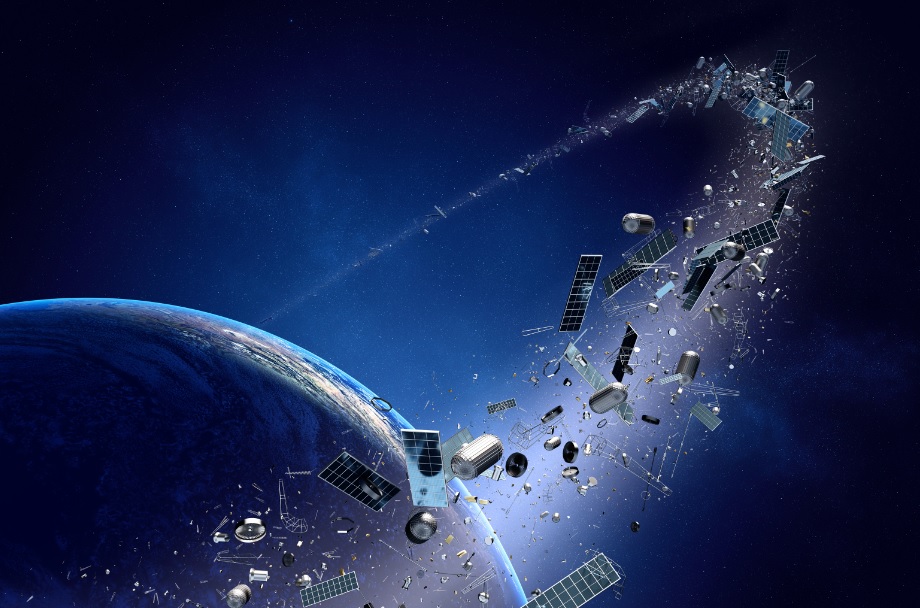US plans to seriously address the issue of space debris

Near Earth outer space is becoming more accessible. Hundreds of millions of dollars are no longer required to launch their own satellite into orbit - tens are needed, and soon, Elon Mask promises to reduce the cost of launching the launch vehicle by almost an order of magnitude. Well, the more spacecraft a person launches into orbit, the correspondingly there will be more of them - the dependence is very simple.
And not all satellite owners and operators calculate their trajectory in such a way that, having completed their work cycle, they fall back to Earth, burning in the atmosphere. Now in the orbit of the planet are hundreds of vehicles that are many, many years old. Even more - parts of such systems: debris, pieces of exfoliated paint, etc.
A specialized space debris monitoring service operates in the United States. Its experts cataloged more than 19,000 objects that are in different orbits. And these are quite large elements. There are many more small ones, hundreds of thousands of them. Small objects are those whose size is about 1 cm or a little larger. Why are they dangerous? About it on Habré it was said more than once. The fact is that they, traveling at a speed of hundreds of thousands of kilometers per hour, pose a serious threat to existing spacecraft and rockets. One such object, less than a millimeter in size, almost pierced the porthole on the ISS.
The US National Space Council plans to launch a new space debris particle tracking system in the near future. Earlier this week, Scott Pace, executive secretary of the space council, outlined some of the nuances of future changes. In particular, he said that the fight against space debris is part of US policy related to space exploration. And safe movement in outer space fully meets the interests of the state.
Here we can say that, of course, not only the United States is interested in the absence of space debris around the Earth. All this meets the interests of any space power or company that plans to carry out one or another activity in space.
But in the United States, the fight against space debris has become a matter of national importance. A special document has been formed, which is called Space Policy Directive-3. The document indicates the need to modernize the current space debris monitoring system, as well as develop methods for dealing with it. These are the responsibilities assigned to the Ministry of Defense of the country. To one degree or another, representatives of other ministries have also been involved in the implementation of the provisions of the new policy.
The US initiative was supported by the governments of several countries, as well as many organizations. “I think this is a big step in the right direction,” said Brian Wieden, head of one of the areas of Secure World Foundation.
Now the main actions of the participants in the new program will be aimed at ensuring that a minimum number of new objects appearing in orbit, which are part of space debris. The ultimate goal is to promote the commercial sector, that is, companies that are somehow connected with outer space, satellites, space tourism and other areas of near-Earth development.
By the way, it is still unknown how the new policy will affect the plans of some companies to create a global Internet network. The implementation of these plans is to send hundreds or even thousands of satellites into Earth orbit. From a great height, satellites will cover the entire planet’s surface with a wireless network, which will allow even residents of remote and inaccessible regions to connect to the Internet.
As for Russia, the country also offers some methods of dealing with space debris, those objects that are already in orbit. In particular, Roscosmos proposed the creation of a laser gun in order to vaporize debris particles. "Cannon" is proposed to be installed on board the ISS. And you can make such a gun from an optical telescope, having previously modified it.
By the way, the Russian Outer Space Monitoring System monitors only 13,000 objects of artificial origin. According to Russian experts, seven thousand objects with a size of more than 20 centimeters are moving in a low Earth orbit (from 160 to 2000 km) and another 6 thousand objects with a size of 20-40 centimeters are in a high (from 2000 to 50 000 km) low Earth orbit.
